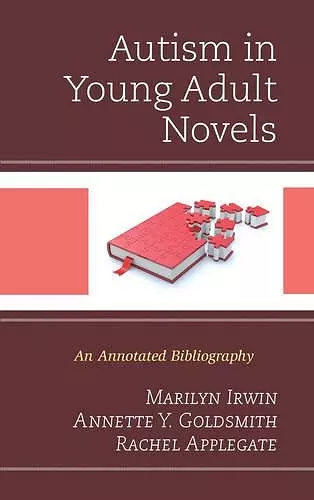Autism in Young Adult Novels
An Annotated Bibliography
Rachel Applegate author Annette Y Goldsmith author Marilyn Irwin author
Format:Hardback
Publisher:Bloomsbury Publishing PLC
Published:17th Jun '15
Currently unavailable, and unfortunately no date known when it will be back

An estimated 1 in 110 children in the United States has autism spectrum disorder (ASD). Although the public awareness of autism has grown significantly, teens are not as educated about this subject as they should be. When accurately and positively presented, literature has been shown to help the classmates of those with ASD better understand the disorder. Increased familiarity with the subject will, in turn, help foster acceptance.
In Autism in Young Adult Novels: An Annotated Bibliography, Marilyn Irwin, Annette Y. Goldsmith, and Rachel Applegate identify and assess teen fiction with autism content. In the first section, the authors analyze how characters with ASD are presented. Where do they live and go to school? Do they have friends? Do they have good relationships with their family? How are they treated by others? The authors also consider whether autism is accurately presented. This discussion is followed by a comprehensive bibliography of books that feature a character identified as being on the autism spectrum.
The novels reviewed in this volume date as far back as the late 1960s and include works published in the last few years. As more and more authors of young adult fiction become sensitive to ASD, they are featuring such characters in their novels, creating more realistic works for their readers. This study will help librarians and others collect, choose, evaluate, and use these works to educate young adults.
With the increase of children and teens diagnosed with an autism spectrum disorder (ASD), there has also been an increase of books on the subject, including fiction. This book looks at 100 novels published in English between 1968 and 2013, for young adults (ages 11 to 19), with at least one main character overtly stated as having an ASD. Each novel was analyzed by the authors using a coding sheet developed for the study, which is included in the appendix. The three parts to the book are an analysis of characters, a section of annotated bibliographies, and a bibliography of novels where a character shows characteristics of having an ASD but it is not clearly stated in the book. In the character analysis, the authors looked for such things as sex, age, whether the character has friends, the relationship with family members, and how accurate the information on ASD is presented. The annotated bibliography includes information such as whether autism is a central plot of the novel, how accurately ASD is described in the novel, and how well written the novel is. This is a unique bibliography of a topical issue, and it belongs in most school and public library professional collections. * Booklist *
Originally conceived as a research article, this study offers a content analysis of autism represented in novels for young adults over the years 1968–2013, addressing the problem of how characters with autism spectrum disorder (ASD) are portrayed. Authors Irwin, Goldsmith, and Applegate give clear explanations of the definitions used in their analysis, although they do not describe how they ascertained literary quality. For each book, they identify which characters have ASD, how these individuals are related to the protagonist, and whether their stories are central or are subplots in the narrative. Family relationships and perceptions of these interactions are also treated. Each analyzed work included in the bibliography offers a brief description of the role autism plays in the story, a rating on an autism content scale devised by the authors (i.e., how accurate is the portrayal), as well as a note on literary quality and genre. Extensive data charts and appendixes reveal details of the scale results; inclusion of the coding sheets is a helpful addition for readers interested in replicating or extending the analysis. The sources analyzed will be especially helpful to teachers dealing with inclusion who are looking for suitable reading materials to augment students' understanding of ASD. Summing Up: Recommended. Researchers/faculty; professionals/practitioners. * Choice Reviews *
ISBN: 9781442251830
Dimensions: 236mm x 161mm x 17mm
Weight: 381g
166 pages